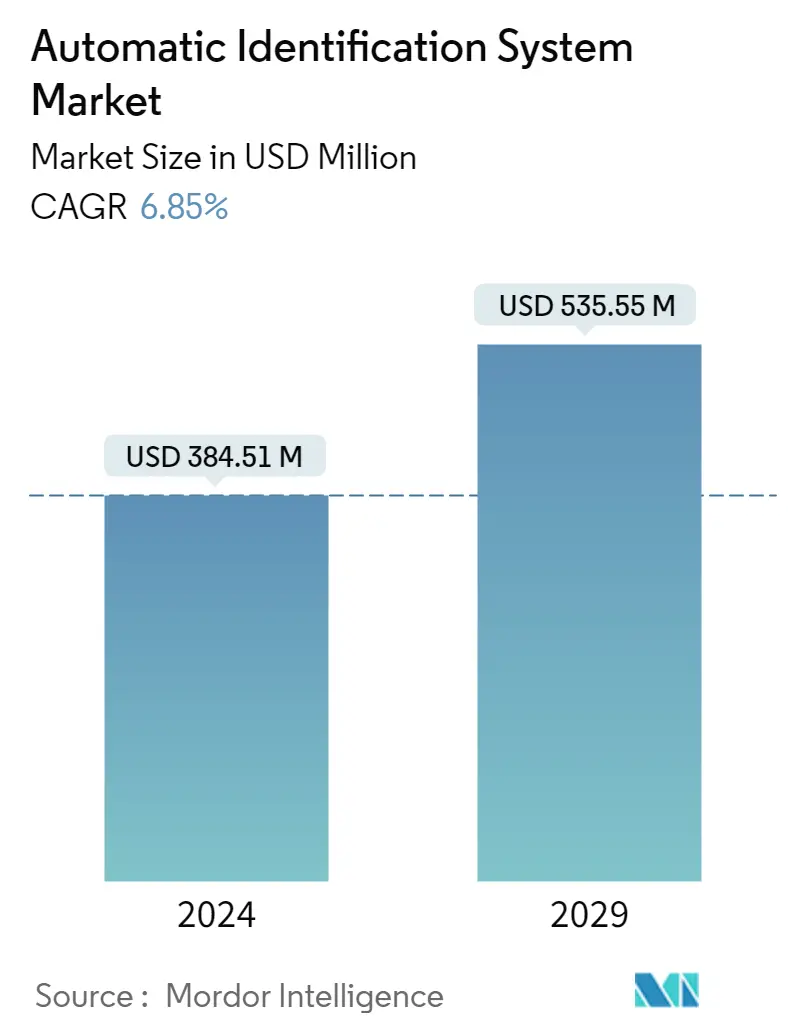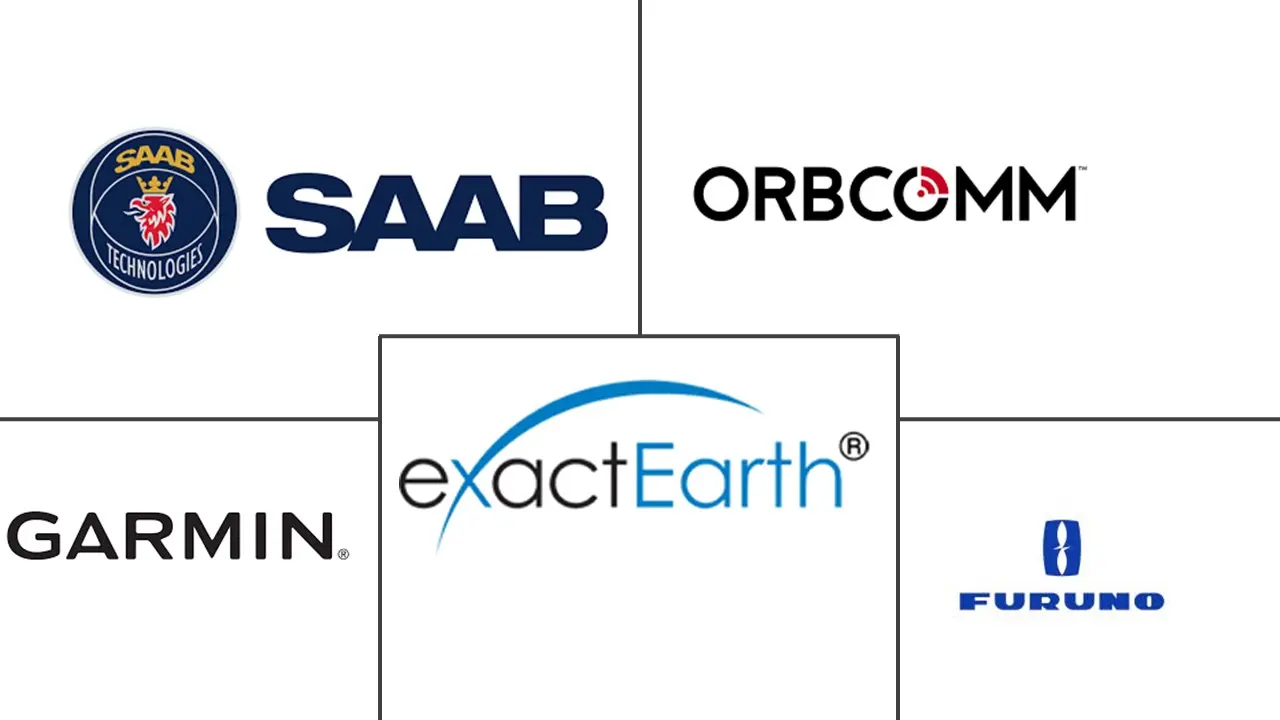Market Size of Automatic Identification System Industry

| Study Period | 2019 - 2029 |
| Market Size (2024) | USD 384.51 Million |
| Market Size (2029) | USD 535.55 Million |
| CAGR (2024 - 2029) | 6.85 % |
| Fastest Growing Market | Asia Pacific |
| Largest Market | North America |
Major Players
*Disclaimer: Major Players sorted in no particular order |
Need a report that reflects how COVID-19 has impacted this market and its growth?
Automatic Identification System (AIS) Market Analysis
The Automatic Identification System Market size is estimated at USD 384.51 million in 2024, and is expected to reach USD 535.55 million by 2029, growing at a CAGR of 6.85% during the forecast period (2024-2029).
The spread of COVID-19 severely affected the market growth. Due to the closing of international borders to contain the virus spread, ports were closed with no trade deals, hindering market growth during the pandemic.
- The International Maritime Organization's International Convention for the Safety of Life at Sea requires automatic identification systems to be fitted in international voyaging ships with 300 or more GT ( Gross Tonnage) and passenger ships, regardless of size.
- In February 2021, the Southern Region Marine Department of Malaysia issued Port Circular No. 02/2021, informing the maritime community that it may require all vessels approved to operate to activate their Automatic Identification System (AIS) at times.
- Sea freight has witnessed significant growth across the world in recent years. Considerable investments are being made for the marine industry at a global level, which has led to an increased demand for AIS, especially for vessel tracking.
- The UK planned a Maritime Trade and Investment Five-Year Plan, focusing on five main areas - Green Maritime, Digital Technologies, Autonomous Vessels, Marine Science, Maritime Professional, and Business Services. Additionally, Myanmar announced the installation of AIS on its coastal and fishing vessels to ensure maritime security. To control AIS and exchange navigation information, AIS stations are expected to be established at 19 jetties, and the range of the AIS may stretch to 48-80 kilometres.
- AIS systems transmit radio signals in the maritime VHF band, and airwaves are inherently noisy. In ports and crowded areas, bandwidths often become congested due to competing signals, which interfere with each other. Additionally, satellites and ground-based receivers may only take in limited information simultaneously. Due to this congestion, any individual vessel may drop on and off the map. More satellites receiving AIS signals shall help enhance the coverage, but currently, they are of limited receiving capacity.
